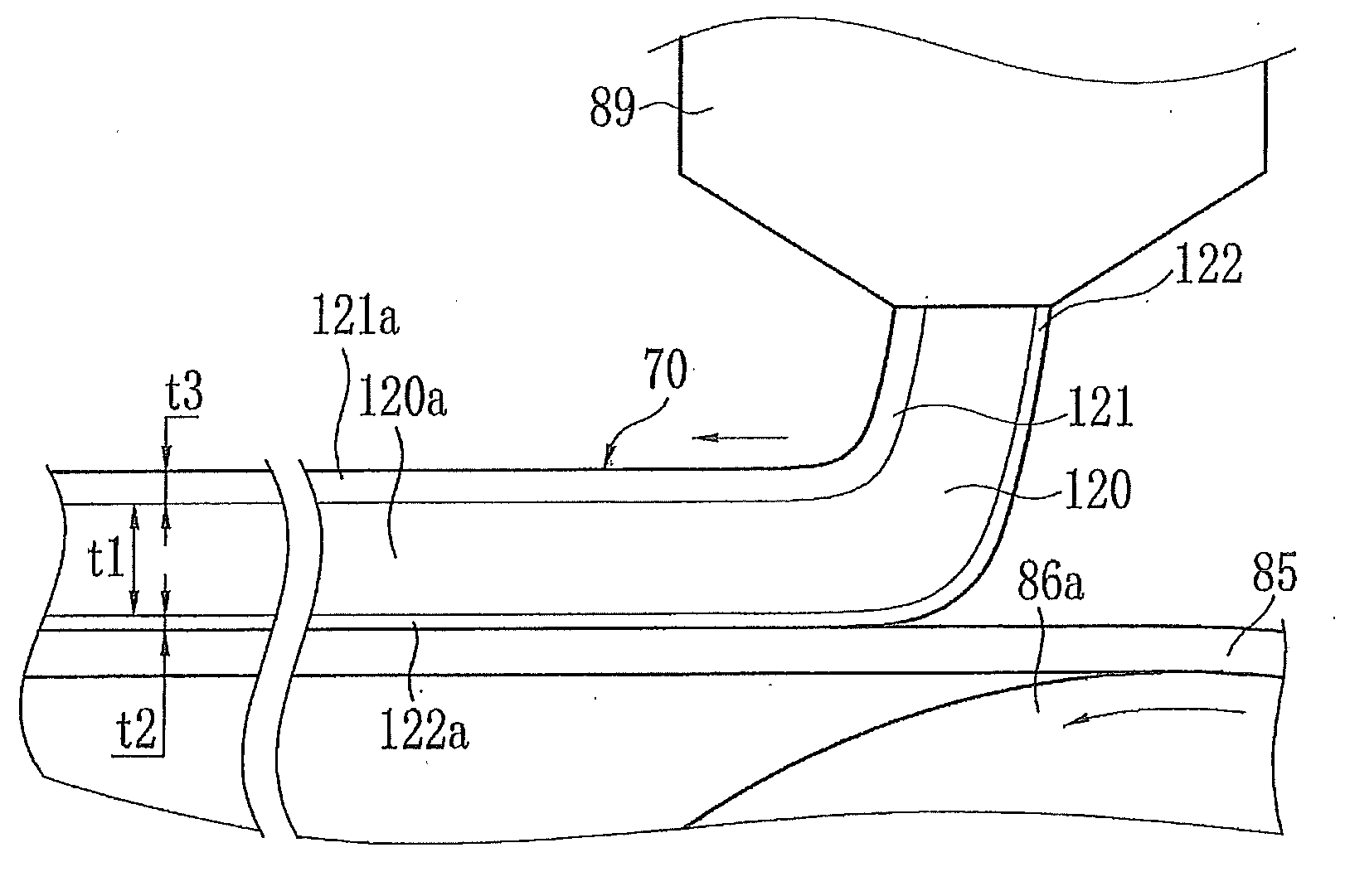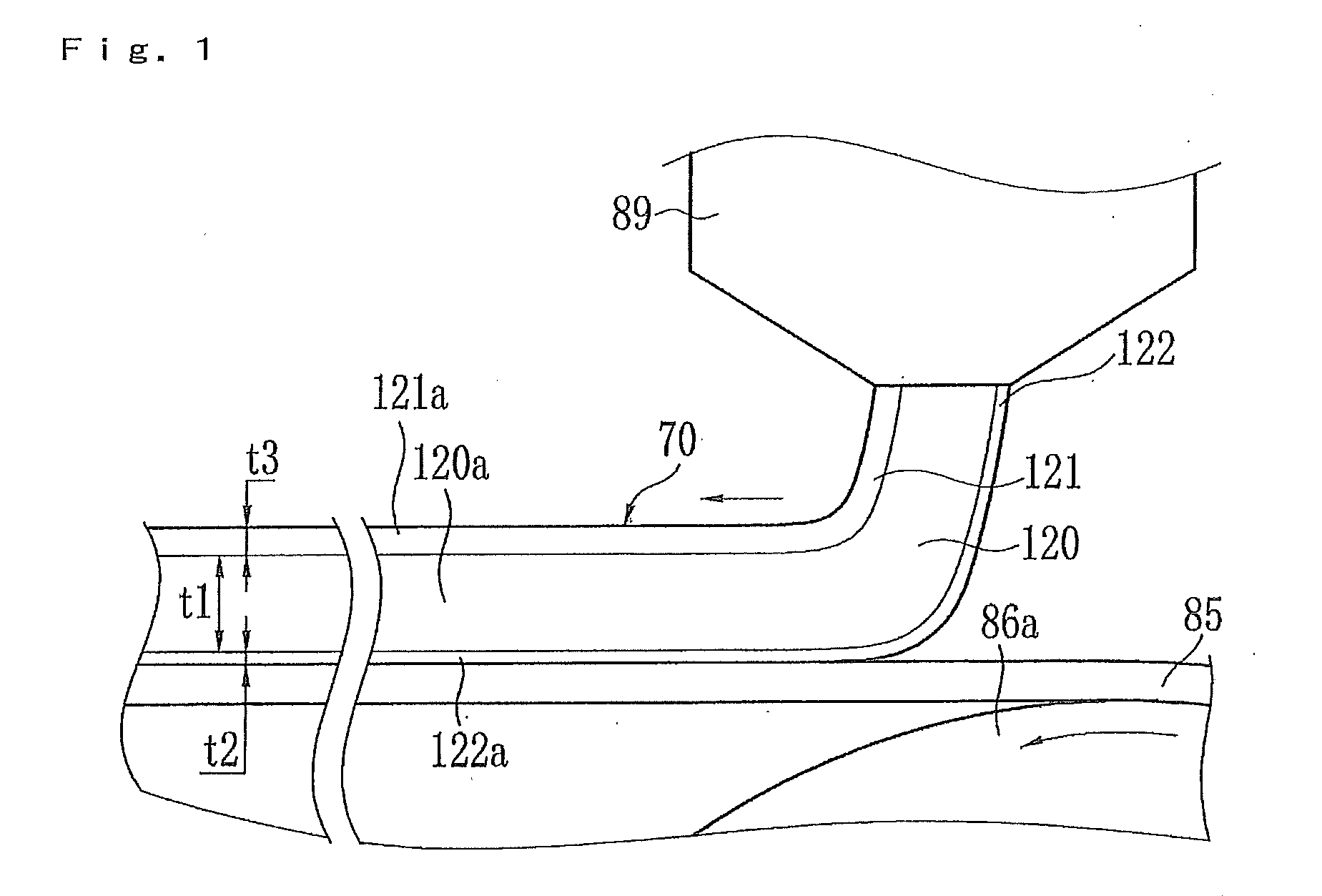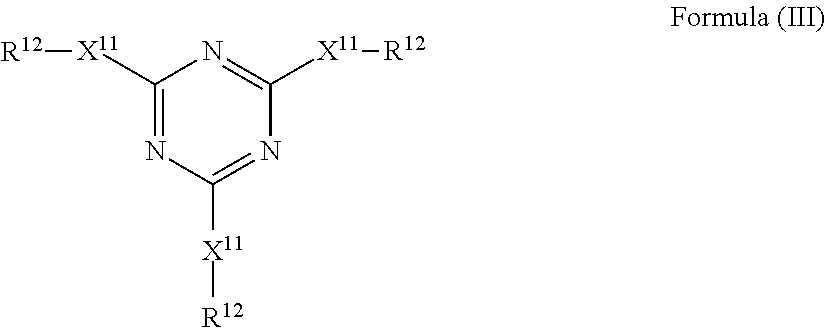Cellulose ester film, polarizer and liquid crystal display device
a technology of cellulose ester and cellulose ester, which is applied in the direction of polarising elements, instruments, synthetic resin layered products, etc., can solve the problems of high film haze, insufficient miscibility of cellulose ester, and limited production conditions of plasticizer-containing transparent films. achieve good surface condition, excellent durability, and high production efficiency
- Summary
- Abstract
- Description
- Claims
- Application Information
AI Technical Summary
Benefits of technology
Problems solved by technology
Method used
Image
Examples
examples
[0368]The characteristics of the invention are described more concretely with reference to the following Examples. In the following Examples, the material used, its amount and the ratio, the details of the treatment and the treatment process may be suitably modified or changed. Accordingly, the invention should not be limitatively interpreted by the Examples mentioned below.
(Preparation of Cellulose Acylate)
[0369]Various cellulose acylates differing from each other in the type of the acyl group therein and the degree of acyl substitution were prepared as in Table 3. For preparing these, a catalyst of sulfuric acid (in an amount of 7.8 parts by mass relative to 100 parts by mass of cellulose) was added to cellulose, and a carboxylic acid to be the starting material of the acyl substituent was added thereto and reacted for acylation at 40° C. In this, the type and the amount of the carboxylic acid were changed to thereby control the type of the acyl group and the degree of acyl substi...
example 34
Co-Cast Film
[0380]Dopes shown in Table 5 were prepared in the same manner as in Example 7. FIG. 1 is referred to. As illustrated therein, the three dopes were co-cast from the casting die 89 onto a running cast band 85. In this, the casting amount of each dope was suitably controlled in simultaneous multilayer co-casting to give a cast film 70, in which the inner layer was made thickest. Finally after stretched, the thickness of the inner layer of the film was 55 μm, and that of the surface layer A and the surface layer B was 2.5 μm each. While having a residual solvent amount of about 30% by mass, the film was peeled away from the band, and stretched by 30% in the cross direction using a tenter while hot air at 140° C. was applied thereto. Subsequently, the tenter transference was changed to roll transference, and the film was further dried at 120° C. to 150° C. and wound up. The retardation, the internal haze and the durability of the film were determined according to the above, a...
example 36
Mounting on VA Panel
[0386]As the upper polarizer and the lower polarizer (backlight side) of the above liquid-crystal display device comprising a vertically-aligned liquid-crystal cell, the polarizer comprising the cellulose acetate film of Example 35 was stuck to the liquid-crystal cell in such as manner that the cellulose acetate film thereof could face the liquid-crystal cell. The upper polarizer and the lower polarizer were stuck to the liquid-crystal cell via an adhesive. These are in a cross-Nicol configuration of such that the transmission axis of the upper polarizer is in the vertical direction and the transmission axis of the lower polarizer is in the horizontal direction.
[0387]A square wave voltage of 55 Hz was applied to the liquid-crystal cell. The mode was a normally black mode in which the white level display was at 5V and the black level display was at 0V. The transmittance (%) at the time of black level of display at a viewing angle of azimuth angle of 45 degrees and...
PUM
| Property | Measurement | Unit |
|---|---|---|
| mol % | aaaaa | aaaaa |
| RH | aaaaa | aaaaa |
| thickness-direction retardation | aaaaa | aaaaa |
Abstract
Description
Claims
Application Information
 Login to View More
Login to View More - R&D
- Intellectual Property
- Life Sciences
- Materials
- Tech Scout
- Unparalleled Data Quality
- Higher Quality Content
- 60% Fewer Hallucinations
Browse by: Latest US Patents, China's latest patents, Technical Efficacy Thesaurus, Application Domain, Technology Topic, Popular Technical Reports.
© 2025 PatSnap. All rights reserved.Legal|Privacy policy|Modern Slavery Act Transparency Statement|Sitemap|About US| Contact US: help@patsnap.com



